Chef Uniforms for Different Types of Kitchens
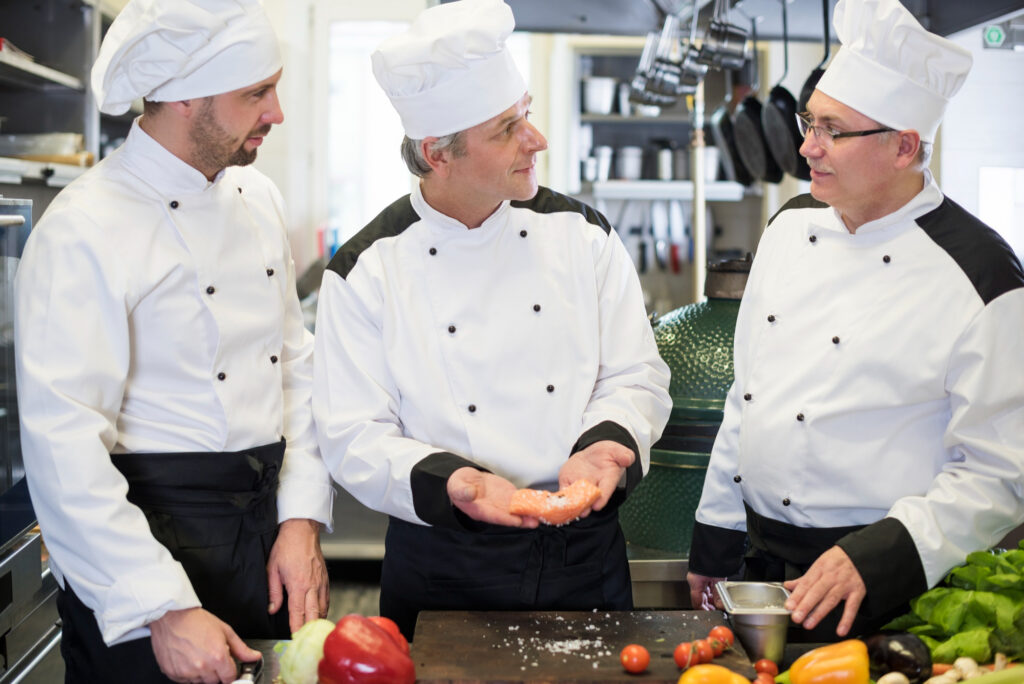
Chef uniforms are an important part of any professional kitchen. They help keep chefs clean and protected from spills and burns and create a sense of professionalism and unity. Various chef uniforms are available, and the best uniform for a particular chef will depend on the type of kitchen they work in and their specific tasks. For example, chefs in hot kitchens may wear long-sleeved chef jackets and aprons, while chefs who work in cold kitchens may prefer to wear short-sleeved chef jackets or vests. In addition to chef jackets and aprons, other common components of chef uniforms include chef hats, neckerchiefs, and slip-resistant shoes. Chef hats and neckerchiefs help to keep hair and sweat out of food, while slip-resistant shoes help to prevent accidents in the busy kitchen environment.
Chef Uniforms for Hot Kitchens

In hot kitchens, where the heat sizzles and pots steam, chefs need special uniforms to stay comfy and safe. Let’s check out what they wear:
- Long-Sleeve Chef Jackets: These are like magic shields. They protect chefs from splatters and hot things. Plus, they’re usually white to show cleanliness.
- Aprons: Aprons are like superheroes’ capes. They shield chefs from spills and messes. They come in different colors, but white is popular for cleanliness.
- Chef Hats: Those tall, puffy hats you see? They’re not just for show. They keep chefs’ hair from falling into the food.
- Neckerchiefs: These are like stylish accessories. They soak up sweat and add a touch of class.
- Slip-resistant Shoes: Cheers wear special shoes with grip to avoid slip-and-slide accidents.
These uniforms are like chefs’ trusty sidekicks in hot kitchens, helping them cook delicious meals safely and comfortably.
Chef Uniforms for Cold Kitchens
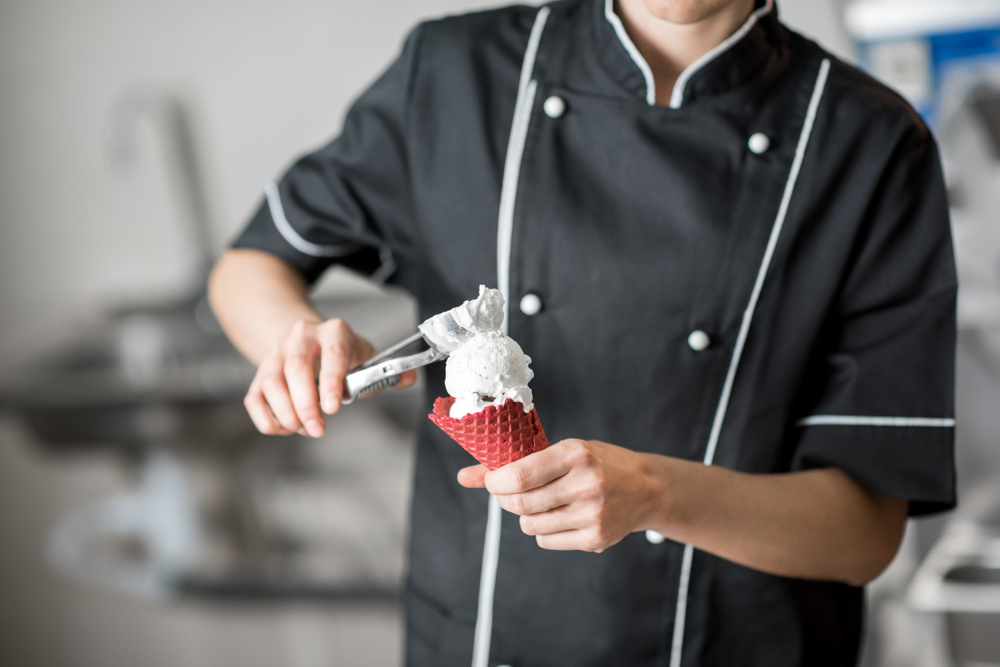
When it’s chilly in the kitchen, chefs need uniforms that keep them warm and look professional. Let’s take a look at the chef uniforms for cold kitchens:
- Short-Sleeve Chef Jackets: These are lighter than long sleeves but keep chefs looking sharp. They allow more freedom of movement, handy when things get busy.
- Aprons: Aprons are like cozy blankets for chefs in cold kitchens. They protect against spills and drafts. Many prefer darker colors to hide stains.
- Chef Hats: Keeping warm is the name of the game in cold kitchens. Chef hats help retain heat and keep the head warm.
- Neckerchiefs: Like in hot kitchens, these add style and soak up sweat. They can also provide extra warmth in cold environments.
- Slip-resistant Shoes: Safety is still a priority. Slip-resistant shoes are crucial to prevent accidents in cold, possibly slippery conditions.
In cold kitchens, these uniforms help chefs stay warm and focused on creating delectable dishes, no matter how low the temperature drops.
Chef Uniforms for Bakers and Pastry Chefs
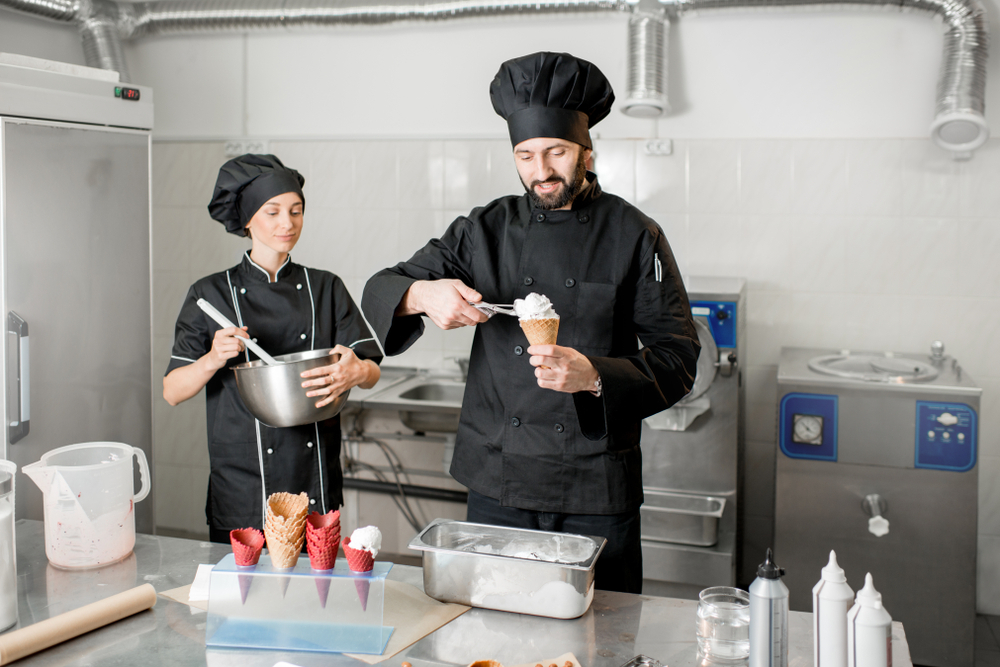
Bakers and pastry chefs have special chef uniforms designed to keep them comfortable and safe in their flour-filled world. Here’s what you’ll often see them wearing:
- Long-Sleeve Chef Jackets: These help protect from hot ovens and dough messes. The bakers need that extra coverage.
- Aprons: Flour and icing can get everywhere, so aprons are essential. They shield the chef’s clothes from getting covered in ingredients.
- Chef Hats: These serve two purposes. First, they keep hair out of the food. Second, they help maintain cleanliness in the kitchen.
- Neckerchiefs: They aren’t just for looks. Neckerchiefs can be used to wipe away sweat and stay tidy while baking.
- Slip-resistant Shoes: Bakers need these to avoid slipping on spills and staying safe around hot ovens.
- Oven Mitts: Special mitts protect hands from hot trays and pans. They’re like superhero gloves for bakers.
- Hairnets: For extra hygiene, some bakers wear hairnets to ensure no strand of hair falls into the dough.
These uniforms are like trusty companions in baking and pastry, helping chefs create mouthwatering treats while keeping them clean and safe.
Chef Uniforms for Sous Chefs and Line Cooks
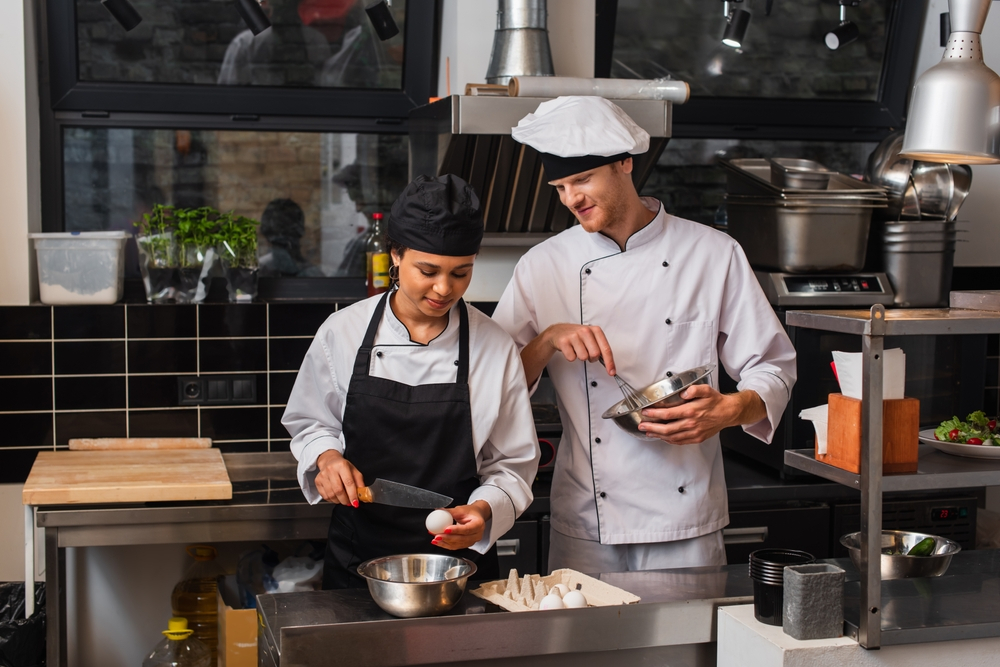
Sous chefs and line cooks have their chef uniforms designed to help them work efficiently and look professional. Here’s what you’ll often find them wearing:
- Long-Sleeve Chef Jackets: These are like the team jerseys in the kitchen. They show they’re part of the crew and protect against spills and splatters.
- Aprons: Aprons are like shields against messiness. They keep the chef’s clothes clean while they work their culinary magic.
- Chef Hats: Like in other kitchens, these hats keep hair out of the food and maintain hygiene.
- Neckerchiefs: Neckerchiefs add a touch of style to the uniform while also being useful for wiping away sweat.
- Slip-resistant Shoes: Safety is key in a bustling kitchen. These shoes help chefs keep their footing, even when things get hectic.
For sous chefs and line cooks, these uniforms are like their work armor. They show they’re ready to cook up a storm and keep the kitchen running smoothly.
Chef Uniforms for Executive Chefs

Executive chefs have unique chef uniforms that reflect their high-ranking position in the kitchen. Let’s take a look at what you’ll typically find executive chefs wearing:
- Chef Coats: Executive chefs often wear crisp, pristine chef coats. These coats signify their authority and experience in the kitchen. They’re like the captains of the culinary ship.
- Aprons: Aprons are still a practical choice, but for executive chefs, they can be more stylish and customized. It’s a balance of function and fashion.
- Chef Hats: The tall chef hat, or toque, symbolizes an executive chef’s status. It signifies their expertise and leadership.
- Neckerchiefs: Neckerchiefs can be an elegant accessory for executive chefs, adding a touch of sophistication to their attire.
- Slip-resistant Shoes: Safety is crucial for the kitchen, including executive chefs. Slip-resistant shoes ensure they don’t encounter any accidents on the kitchen floor.
- Professional Attire (e.g., slacks, dress shirt, tie): Executive chefs often pair their chef coats with professional clothing like slacks, dress shirts, and sometimes ties. This completes the look of a top chef.
These uniforms symbolize executive chefs’ culinary mastery and leadership in the kitchen. They command respect and set the standard for their team.
Chef Uniforms for Home Cooks

Home cooks might not need a full chef’s uniform, but there are a few things that can help make cooking at home more enjoyable and convenient:
- Comfortable and Loose-Fitting Clothing: You can wear whatever makes you feel comfy at home. Loose-fitting clothes are a good choice because they allow easy kitchen movement.
- Apron: Even at home, spills happen. An apron can keep your regular clothes clean and stain-free.
- Hairnet (optional): If you have long hair, tying it back or wearing a hairnet can prevent stray hairs from getting into your food. It’s optional but a good practice for hygiene.
Your home kitchen, your rules! While you may not need a full chef uniform, these simple items can make your cooking experience more comfortable and mess-free.
Chef Uniforms for Culinary Students
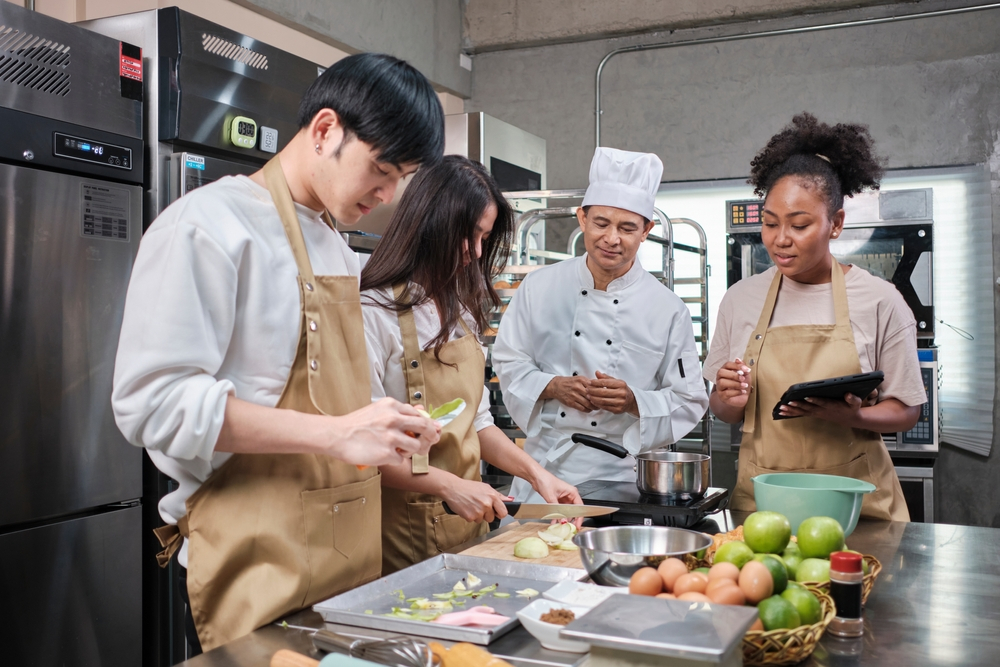
For culinary students, wearing the right chef uniform is all part of the learning experience. Here’s what you’ll typically find culinary students wearing:
- Chef Jackets: These jackets are like a badge of honor. They show that you’re part of the culinary world. They often have double-breasted fronts, which look neat and professional.
- Aprons: Aprons are your armor against spills and splatters. They protect your regular clothes from getting messy and help you stay organized.
- Chef Hats: Just like the pros, culinary students wear chef hats. They’re a symbol of discipline and professionalism.
- Neckerchiefs: Neckerchiefs can add a touch of style to your uniform while serving a practical purpose, like wiping away sweat.
- Slip-resistant Shoes: Safety is vital in a bustling kitchen. These shoes ensure you don’t slip on wet floors.
Culinary students wear these uniforms to look the part and learn the ropes in the kitchen. It’s all part of the journey to becoming a skilled chef.
Conclusion
In conclusion, chef uniforms are more than just outfits; they’re essential tools in the kitchen. Whether in a hot, cold, or specialized kitchen, the right uniform keeps you safe, clean, and professional. From long-sleeved jackets to slip-resistant shoes, each element serves a purpose. Executive chefs wear distinguished coats, while home cooks keep it simple. Culinary students don uniforms as they learn the culinary craft. Wherever you find yourself on your culinary journey, remember that choosing the right chef uniform matters. It’s not just about style; it’s about safety, hygiene, and the mark of a dedicated chef.
